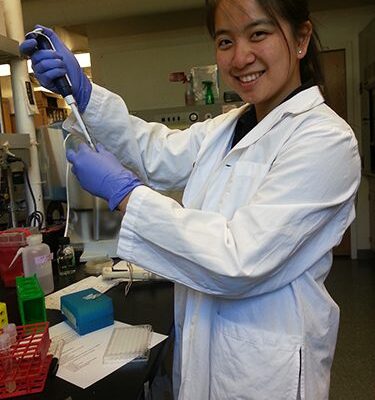Helen Tran Rose Hills
Characterization of ATP Release and Biofilm Production by Salmonella and E. coli
Salmonella is a Gram-negative pathogenic bacterium that can invade cells, take residence within macrophages, and evade the immune response, causing illness and death especially in those with compromised immune systems. Recently we have discovered that Salmonella and E. coli release ATP to culture medium and we are currently determining the function and the mechanisms of ATP release. The initial plan for my summer project was to determine the role of ATP release in biofilm formation, which allows Salmonella to become more resistant to stressful conditions and antibiotics. After doing preliminary studies, we have determined that the assay to quantify biofilm formation was not robust enough and did not give us consistent results. For this reason, I decided to instead study the biochemical mechanisms of ATP release. I will test a panel of mutants containing mutations in genes that code for porins, channels, or outermembrane proteins that may play a role in secreting ATP. Growth curve analysis will be determined for each mutant to determine which protein(s) is necessary for ATP release. After identifying the mutants defective in ATP secretion, specific mutations, rather than a total deletion will be made in the specific genes. These new mutants will then be assayed for their ATP release to determine the biochemical structural properties of these proteins that allow ATP to be released from bacteria.
Message To Sponsor
The SURF Rose Hills program has given me the opportunity to spend the summer in Berkeley doing research full time. I will be able to devote myself completely to my research project and have a more hands on learning experience rather than learning things from a classroom. I am very grateful for the support I have from the program, Dr. Lu, and UC Berkeley staff. The program will provide me with an experience that I will be beneficial to me in my future scientific pursuits. I look forward to what the summer holds and my experiences with the program.